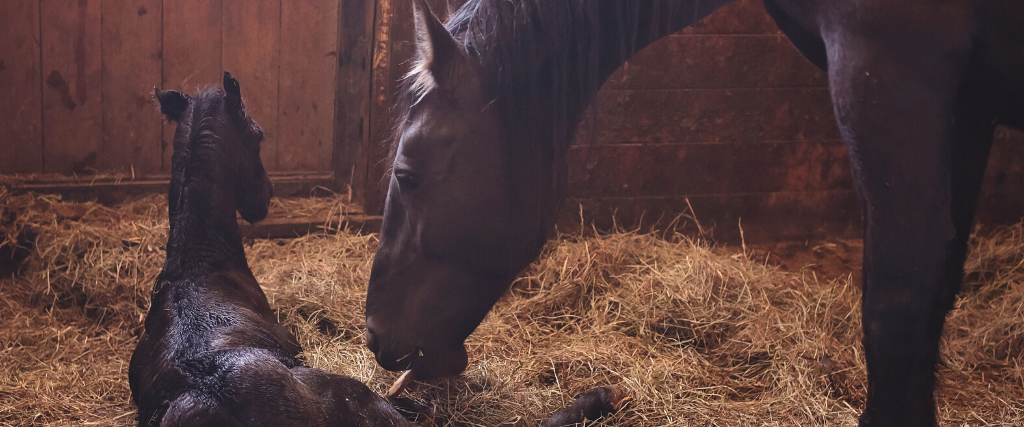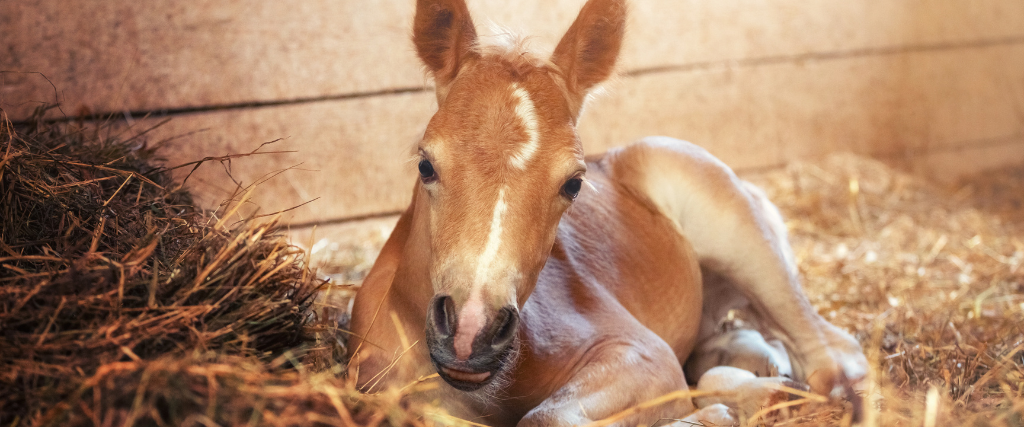The birth of a foal is an extraordinary experience to witness, but it also comes with heightened anxiety for the horse owner. With an average gestation period of approximately 340 days, many questions can arise over such a long period — especially for an owner foaling for the first time. From ensuring proper care of the pregnant mare to monitoring closely as the due date approaches, there are several steps to take that will ensure a smooth process for both the expectant mother and the horse owner.
Breeding Screening
A pre-breeding exam should be conducted as a first priority, which involves your veterinarian taking a close look at the horse’s uterus to ensure there are no abnormalities that might inhibit pregnancy or lead to pregnancy complications. Your veterinarian will also examine the ovaries to confirm the horse is cycling properly for breeding.
Breeding & Confirming Pregnancy
There are risks that come with breeding a mare, with most of the concern associated with the horse’s health during pregnancy, delivery, and caring for both the mare and foal following birth. Your veterinarian will confirm pregnancy with an ultrasound 15-17 days after breeding. They will also look for twins and any early signs of a complication.

Potential Complications
-
Caslicks
A Caslick is a procedure performed by a qualified veterinarian when a mare has an unusual conformation of the genital area. It involves suturing the upper vulva closed to prevent manure and air from entering the vagina, which may compromise the healthy development of the foal. The Caslick is removed before delivery. The American Quarter Horse Association provides additional insight on Caslick surgery.
-
Running Milk
A mare close to foaling may drip milk from its udder. Sometimes, it can be a steady stream of milk. This is typically colostrum — a thick, yellow-colored milk that precedes white, normal milk. However, if colostrum begins to leak too early, the foal may not receive adequate colostrum after birth, which provides critical antibodies. If the mare is running milk for more than 24 hours and is not ready to foal, a veterinarian should be contacted immediately.
-
Early Labor
Much like human pregnancies, early labor is always a possibility. While this doesn’t usually pose a threat to the mare or foal, the horse owner must be ready for foaling well ahead of the expected due date. Early labor can result in the horse not producing enough colostrum (“first milk”) by the time the foal is born, requiring veterinarian assistance to ensure proper nourishment. An early delivery can also make the foal more susceptible to infection and disease, as well as instability standing to nurse.
Preparing for Foaling
As the mare’s due date approaches, the owner should take note of behavioral changes that indicate delivery is imminent. At this point, the mare should be housed in a clean, grassy area with a mate nearby. A wide open range is ideal for foaling to allow plenty of space versus a small stable where confinement may limit movement and delay delivery progress. If a stall is the only option, it should be at least 14’ x 14’ with bedding and a floor that can be sanitized post-delivery.
The following are indicators that a mare is preparing to foal:
- Removing herself from the herd
- More frequent rests
- Pacing
- Running milk from the udder
- Increased respiration
- Kicking or looking at their abdomen
- Holding tail up
- Excessive grazing
The American Association of Equine Practitioners offers additional detail on preparing for a successful foal delivery.

Labor
In the early stage of labor, the mare will likely get up and down several times. This is its way of repositioning the foal within the birth canal for comfort and easier delivery. They will also urinate frequently, which helps to relieve abdominal pressure.
The early stage of labor can last several hours and requires patience from the horse owner. Monitoring is all that is needed unless distress is noticed. The early labor stage ends with the mare’s water breaking, just as with a female human. Within 20 minutes of the water breaking, the white amniotic membrane should become visible and remain visible as the foal emerges. You’ll see a foot appear first, followed quickly by another foot and then the foal’s nose. After the shoulders are passed, the mare will quickly push out the rest of her foal.
The following are emergency situations during labor and require veterinary assistance:
- Mare is pushing, but nothing appears
- The membrane is red instead of white
- No appearance of the first foot 20 minutes after the membrane appears
- No appearance of the second foot after the first foot for 15 minutes
Once the foal has fully emerged from the mare, the amniotic membrane should naturally rupture. In rare instances when this doesn’t happen naturally, it should be done manually to avoid the foal from suffocating within the membrane sac. After this step is completed, the horse owner should give the mare and foal time alone to allow for bonding.
An expectant mare should be monitored closely by a veterinarian before, during, and after pregnancy to ensure optimal health for both the mare and the foal. Contact your veterinarian if you have questions or concerns regarding your pregnant mare.
Don't have a vet in your area yet? We can help you find a local veterinarian.
